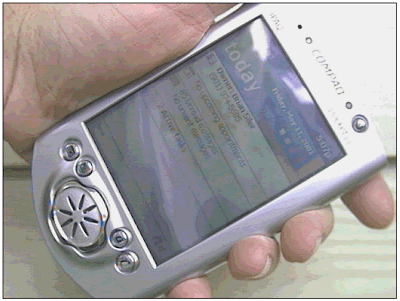function OpenWin(url, w, h) { if(!w) w = 400; if(!h) h = 300; window.open(url, "_new", "width=" + w + ",height=" + h + ",menubar=no,toobar=no,scrollbars=yes", true); } function Print() { window.focus(); if(window.print) { window.print(); window.setTimeout('window.close();',5000); } }
| Team-Fly | |
 | Special Edition Using Microsoft® Visual Basic® .NET
By Brian Siler, Jeff Spotts
| | Table of Contents | | | Part VI: Advanced Programming Topics |
| In this chapter Installing eMbedded Visual Basic Creating the Sample Application Synchronizing Application Data From Here . . .
As computer technology continues to advance at a breathtaking pace, a variety of small handheld computers are starting to appear on the market. These computers, sometimes called PDAs (personal digital assistants) perform a variety of tasks, such as organizing contacts and using e-mail. One particular type of device, the Pocket PC, is of particular interest to the Visual Basic developer. Figure 27.1 shows a typical Pocket PC, which is tiny in comparison to traditional personal computers. Figure 27.1. Visual Basic developers can easily create applications for Pocket PCs such as this Compaq H3600 series.  A Pocket PC runs a slimmed down version of the Windows operating system known as Windows CE. Windows CE is very similar in function to the standard Windows operating system, so users will find the transition easy. In addition, Microsoft has created a special tool for VB programmers, eMbedded Visual Basic, to develop applications for Windows CE devices. In this chapter, we will demonstrate how to develop an application using eMbedded Visual Basic that runs on a Pocket PC. |
| Team-Fly | |
|
| |
|